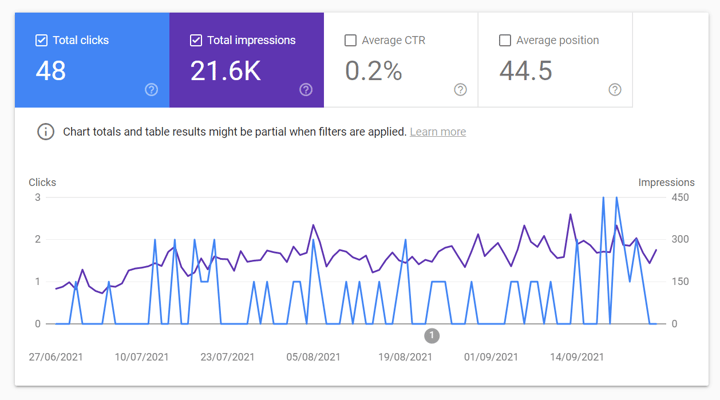Why Your Online Shop Needs Product Reviews
Product reviews can have a big impact on your online shop. Whether it's conversions, building trust, or SEO, learn why your shop needs product reviews.

A good content marketing strategy isn’t only about creating new content, but also about updating the content you’ve already published. Making sure to provide the newest and “freshest” information is valued by your blog’s readers and it's also a proven way to improve your website’s ranking in search results. In this article, you’ll learn what to consider when updating content on a website and why this process is fundamental and particularly rewarding for online shop owners.
Nowadays, running a company blog is one of the most essential elements of a marketing strategy. Not only can you increase your company's visibility in Google search results, but having a company blog will strengthen your brand and your image as an expert in your industry.
However, in order for you to actually achieve this, your content will need to be updated on a regular basis. This isn’t only useful for your readers (and potential customers), but also for search engines: the purpose of Google and other search engines is to provide users with the best information they have to offer and that is exactly why they constantly update search results rankings.
For this reason, it’s necessary to keep your content up-to-date. Google really rewards fresh content in its search results.
Recommended reading:
Google Confirms Customers Can Boost Your SEO
Fresh content, fortunately, doesn’t particularly mean “new” content. You don’t necessarily have to create a whole new blog post for every change that your product goes through or if a process you want to talk about changes - on the contrary, what matters for the search engine is the quality of content, not the quantity.
Just consider it from the perspective of Google's robots. Users who come across a page with outdated data or information are most likely to leave this site quickly - they didn’t find the solution to their problem, which is why the content will be worthless to them.
If this happens repeatedly, you’ll most probably receive a high bounce rate for your website and online shop. This will be a clear signal to Google that your site is of "low quality", and consequentially, you'll be ranked lower in the SERPs.
The good news is that old but updated content has a pretty good chance of ranking high in search results. One comprehensive, high-quality blog post including recent information can often do more for your website SEO than a few outdated articles that depreciate over time and disappear into the depths of the internet.
First of all, in order to successfully update your content you will have to make a selection. It is safe to say that some pages, such as evergreen topics or definitions, can actually remain as they are for several years, since they are still valid.
Here's which elements in articles and posts you need to pay attention to first.
If there is an article on your blog in which you discuss a specific legal topic that is no longer valid, you need to refresh the post with references to the currently applicable regulations or at least inform your readers that there have been some changes.
The same rule applies for statistics and data. If you used research from several years ago in your blog article and new statistics have been published in the meantime, we advise you to update the content with new data since it will be of more value to the user.
Have you posted a blog entry in which you mention a product, a product category, or a brand that isn’t part of your product range any longer or has changed in price? Let your users know about it by providing information on restocking dates, price updates or the replacement of products with similar characteristics.
In this way, you will increase the credibility of your business by offering the reader up-to-date information.

Shutterstock/Pru Studio
Sometimes content that isn’t outdated and is still of relevance lacks relevant information. This content category may also need updating.
If an article doesn't answer the question asked in the title, or if an issue is only superficially explained, users will quickly leave the site. This, in turn, will translate into an increased bounce rate, negatively affecting your rankings.
Therefore, if your blog or website contains content that doesn’t present the respective topic in a sufficiently comprehensive way, it is worth enriching it with, for example, an additional paragraph - especially if a given phrase or keyword makes up for a large number of searches.
On the other hand, remember that the added content should actually have a specific, substantive value for your readers.
Many readers, when looking for content on the internet, first take note of the publication date of a blog post and, if it is too far off, won’t engage in reading the article.
If you decide to update your content (which we definitely advise you to do), be sure to let users know about the date of the update.
Once you have changed the content of your article and added information relevant to the reader, it is a good idea to also include it in the meta title and meta description of your post - especially if you include specific dates. Remember to include keywords that are valuable to search engines.
A proper link structure is one of the key elements of a good off-page SEO strategy to increase your domain's authority. When looking at previously published entries, make sure that the links (both internal and external) do not send users to a page with a 404 error.
Update older entries on a regular basis with links to newer texts that may complete the given content.
Often, when entering a blog page, users are confronted with a huge wall of text at first, which might just discourage them from reading the article and they will leave the page.
To make it more appealing for your readers to actually read the content you created, make sure to divide the text into different sections, add headings, use bullet points or numbering, and highlight the most important parts of the publication, e.g. by bolding them.
Organising your content in this way will benefit not only the reader, but also the search engines.
All graphic and multimedia elements are valuable to both Google and the user. So if, for example, you use infographics or videos with outdated data in an article, you should definitely replace them with fresher ones.
Images and videos are also meant to grab the reader's attention and make the article more visually appealing and easier to read.
Recommended reading:
Increasing Traffic with Visual Content Marketing
When adding graphics, remember to supplement them with SEO-relevant alternative descriptions (Alt-texts). Also, make sure to convert images to appropriate file sizes in order to optimise both your website’s loading speed and the user experience on mobile devices.
Are you giving readers the opportunity to comment on your articles? This is a really nice chance to engage with potential customers! In addition, user-generated content (which comments are) is one way to improve your ranking in Google’s search results. Apart from this, by responding to your reader’s comments, you and your readers will actually create even more content for your website.
In order to provide even more valuable information and to give search engines a positive signal about the high quality of your website, try to answer questions in the comments in a factual manner. By doing so, the content will then not only benefit the person asking, but also future website visitors.
To ensure that updating your content really makes sense and brings tangible benefits, it's worth knowing which articles to refresh first. You can find out, for example, using the following tools:
A valuable source of information concerning your website and your blog’s traffic is Google Analytics. Here you can observe several aspects, including:
If, for example, readers spend very little time on a given article and the bounce rate is pretty high, the chance is pretty high that the content needs an update.
The Google Search Console is a free tool that is quite useful for collecting data on the performance of your website, including:
Additionally, in the status report, you can check the number of correctly indexed sub-pages and find out about any errors which have led to the lack of indexation.

Source: Google Search Console
This tool is particularly useful when you want an overview of all the URLs of your website (when using the free version of the program, you have access to 500 URLs).
Screaming Frog displays information about headers, metadata, loading time of individual URLs and the number of links on a given sub-page. All of these metrics can be helpful when assessing which articles should be updated.
Ahrefs, or more specifically, “Content Gap”, allows you to see which keywords your competitors are using. This way you can find out which phrases you could include during your updates to strengthen your position in search engines.
Note: this service is fee-based. You can give it a try for $7 to see if it is worth the investment or if you prefer to use other tools.
The Google search results themselves can also be used to assess which articles could use a small update. Look at the results on the first page of SERPs, check which keywords are used by your competitors (e.g. in the meta description) and include them when updating your content.
Autocomplete as well as related Google searches can also be a source of inspiration for long tail keywords, etc.

Source: Google Search
Updating the content on your website and blog is essential and doing so will send a positive message to customers and search engines alike. Both of them will then know that your content is of high quality and that they can trust your company.
Let your blog’s visitors know that you care about the quality of your content. They may return the favour with more frequent visits, which will result in increased traffic. This action also has an impact on organic traffic, which can build trust for your site and increase the chances of a completed purchase and a loyal shopper.
Also, remember to always keep your readers up-to-date with your latest product updates, for example through the newsletter or through social media campaigns.
This article was translated and adapted from our Polish blog: Jak aktualizować treści, by poprawić SEO?
06/10/21Product reviews can have a big impact on your online shop. Whether it's conversions, building trust, or SEO, learn why your shop needs product reviews.